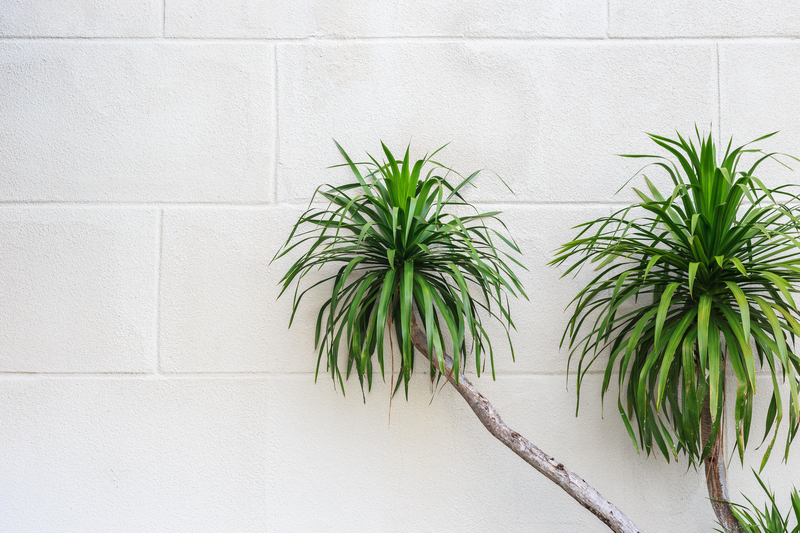Rewild Your Garden: A Beginner's Manual
Posted on 05/02/2025
As the world grapples with the consequences of habitat loss, climate change, and biodiversity decline, many individuals are seeking ways to contribute positively to the environment right in their own backyards. One increasingly popular method is to rewild your garden. Rewilding involves transforming your garden into a more natural state, encouraging native plants and animals to thrive. In this guide, we'll walk you through the essentials of rewilding your garden, from initial planning to maintenance tips.
Understanding Rewilding
Before diving into the practical steps, it's crucial to understand what rewilding is. Rewilding is the process of restoring natural ecosystems to their original state by allowing nature to take its course. This concept, originally used in large-scale conservation efforts, can be scaled down to the personal level for significant ecological benefits. Rewilding your garden can help increase biodiversity, restore natural habitats, and contribute to a healthier environment.

Benefits of Rewilding Your Garden
Rewilding offers numerous benefits beyond simply enhancing the beauty of your yard:
- Increased biodiversity: By creating a habitat for native plants, insects, birds, and animals, you contribute to the biodiversity of your local area.
- Natural pest control: A diverse ecosystem attracts beneficial insects and animals that can keep pest populations in check without the use of harmful chemicals.
- Water conservation: Native plants are adapted to local conditions and require less water once established, helping conserve this vital resource.
- Improved soil health: A more natural garden improves soil structure and fertility over time.
- Carbon sequestration: Rewilding helps capture carbon dioxide from the atmosphere, mitigating climate change.
Planning Your Rewilding Project
Proper planning is the foundation of a successful rewilding project. Here are the steps to get you started:
Assess Your Space
Begin by observing your garden's current state. Take note of the existing plants, soil condition, sunlight, and water availability. Identify whether your garden has different microhabitats that can support various species, such as shady corners or sunnier spots.
Research Native Species
Understanding the native flora and fauna of your region is crucial. Look into which plants naturally occur in your area and which animals they support. Local conservation groups, native plant societies, and online resources can provide valuable information. Choose plants that are not only indigenous but also suited to your garden's specific conditions.
Design a Natural Layout
While formal garden designs have their charm, rewilding embraces a more informal and natural layout. Mimic natural ecosystems by planting in groups and layers, creating a diverse structure of ground covers, shrubs, and taller plants. Consider incorporating elements like rocks, logs, and water features to provide shelter and resources for wildlife.
Implementing Rewilding Practices
With a solid plan in place, it's time to bring your rewilding vision to life:
Remove Invasive Species
Before introducing native plants, remove any invasive species that can outcompete them. Invasive plants often lack natural predators and can quickly disrupt the balance of your rewilded garden. Be thorough in your removal efforts to ensure these species don't return.
Plant Native Species
Select a variety of native plants to support different aspects of the local ecosystem. Start with hardy perennials and ground covers that establish quickly. Trees and shrubs can provide long-term benefits but may require more initial care. When planting, mimic natural growth patterns and avoid rigid, symmetrical arrangements.
Create Wildlife Habitats
To attract wildlife, provide essential resources like food, water, and shelter:
- Bird feeders and baths: Offer supplementary food and water sources, especially during extreme weather conditions.
- Flowering plants: Choose native plants that produce nectar and pollen to attract bees, butterflies, and other pollinators.
- Log piles and rocks: These provide shelter for insects, amphibians, and small mammals.
- Ponds: Even small water features can attract a wide range of wildlife, from frogs to dragonflies.
Minimize Chemical Use
One of the core principles of rewilding is reducing the use of chemicals in the garden. Avoid synthetic pesticides, herbicides, and fertilizers, which can harm both plants and wildlife. Instead, adopt organic practices such as composting, mulching, and natural pest control methods.
Maintaining Your Rewilded Garden
Once your garden is rewilded, ongoing care is essential to ensure its success:
Monitor Plant Health
Regularly check the health of your plants and address any issues promptly. Native plants generally require less maintenance once established but may need occasional watering during dry spells.
Encourage Natural Processes
Allow natural processes like leaf drop and decay to occur. Fallen leaves and plant debris create a nutrient-rich mulch that supports soil health and provides habitat for insects and other small creatures. Avoid overly tidy practices that disrupt these processes.
Adapt and Evolve
Rewilding is a dynamic process that evolves. Observe how your garden changes over time and be willing to adapt your practices. Some plants may not thrive, while others will establish themselves naturally. Embrace this fluidity and continue learning about the ecosystems you support.

Engaging the Community
Rewilding your garden is a personal endeavor, but it can also inspire and involve your community:
Share Your Experience
Document your rewilding journey through photos, social media, or local community groups. Sharing your successes and challenges can encourage others to embark on their own rewilding projects.
Participate in Local Initiatives
Join local conservation efforts, native plant societies, or garden clubs to connect with like-minded individuals. Collaborative projects can amplify the positive impact of rewilding on a broader scale.
Conclusion
Rewilding your garden is a powerful way to contribute to environmental conservation and enhance your connection with nature. By understanding the principles of rewilding, planning thoughtfully, and implementing sustainable practices, you can transform your garden into a thriving ecosystem. Embrace the beauty of biodiversity, minimize chemical use, and engage your community to create a positive ripple effect. As you embark on this journey, remember that rewilding is not just about gardening - it's about nurturing a harmonious relationship with the natural world.












